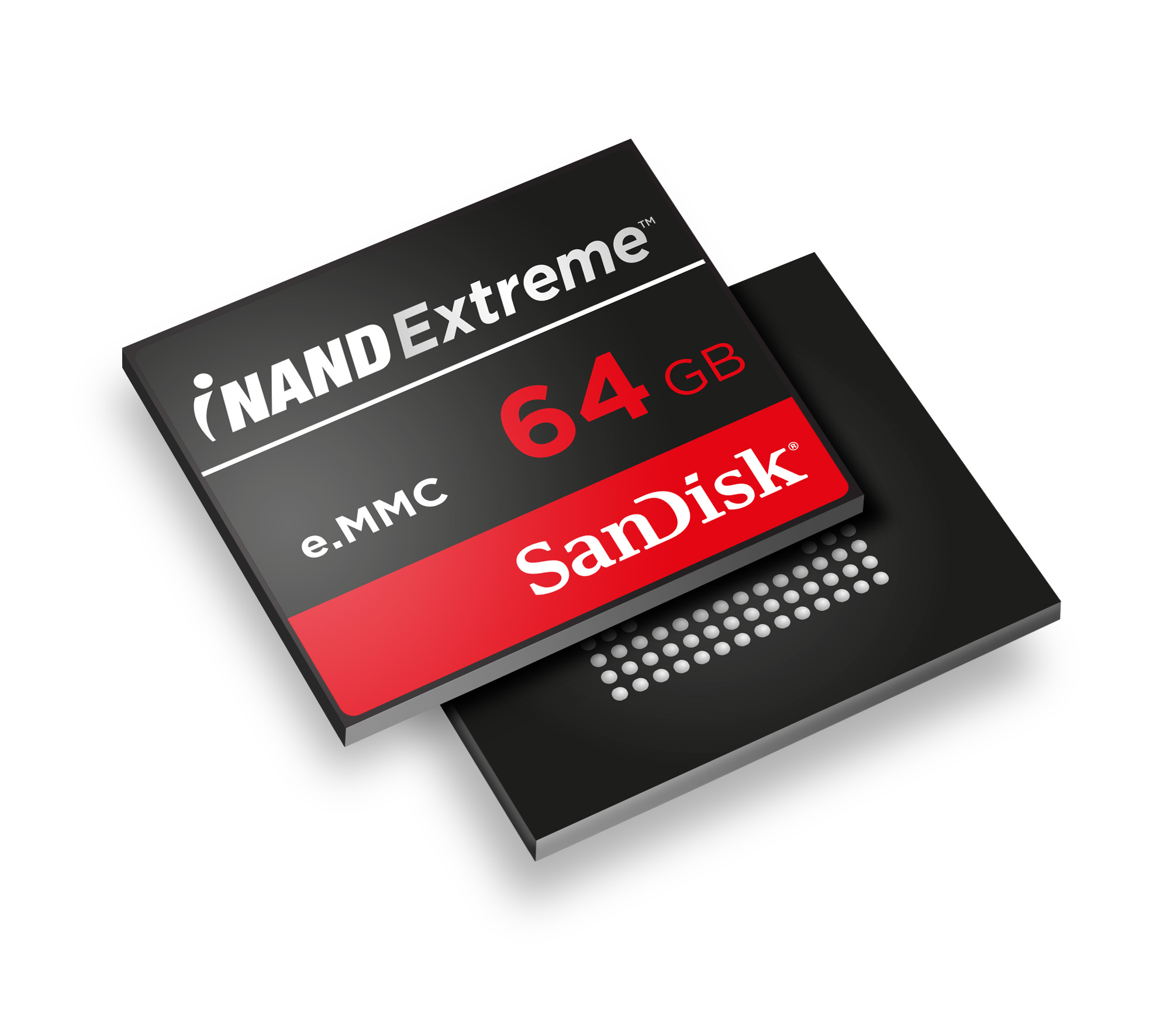SanDisk Dual-core iNAND Extreme is for High-end Mobiles
SanDisk beefs up its storage offerings for next-gen smartphones and tablets.
SanDisk today announced the next generation of its iNAND Extreme embedded flash drive (EFD), which is the fastest, thinnest and most sophisticated embedded storage product from the company to date. iNAND Extreme is geared towards mobile device manufacturers looking for a fast storage solution to create exceptionally responsive smartphones and tablets. Currently, iNAND Extreme is available in capacities from 16 GB up to 64 GB.
Think that only the main processor can go multi-core? Think again. The iNAND Extreme boasts a dual-core design built on the e.MMC 5.0 HS400 specification which should mean it can better handle multiple applications simultaneously, especially for handling data-intensive applications, such as 4K video. It also has a dual channel design with 600 MB/s bandwidth.
For the memory itself, SanDisk quotes sequential write speeds up to 80 MB/s and read speeds up to 300 MB/s. For random writes/read speeds, we're told up to 3000/6000 IOPS. As a comparison, SanDisk's own iNAND Ultra that's meant for mid-range smartphones have a sequential write/read of up to 30/120 MB/s and random write/read up to 500/4000 IOPS. Clearly, SanDisk is targeting the high-end with iNAND Extreme.
Besides just speed out of the gate, SanDisk told us that it wants its product to retain that speed throughout the life cycle of the product. The company gave the example of devices that get slower and slower with age and use, and that's something SanDisk wants to keep away from. SanDisk claims that iNAND Extreme incorporates a sophisticated error correction mechanism, which significantly enhances storage endurance and makes it more resistant to fragmentation.
The new iNAND Extreme is the first iNAND product to be built on SanDisk's 1Y nm process technology, which represents its second-generation 19 nm manufacturing technology. This enables SanDisk to offer 64 GB of storage capacity in a package just 11.5 x 13 mm in size and as thin as 1.0 mm.
iNAND Extreme is sampling now with device manufacturers with general availability targeted in the second quarter of 2014.
Check out all our Mobile World Congress 2014 coverage here!
Follow Marcus Yam @MarcusYam. Follow us @tomshardware, on Facebook and on Google+.
Get Tom's Hardware's best news and in-depth reviews, straight to your inbox.
-
Reply
Think that only the main processor can go multi-core?
No, duh. GPUs have been multicore way before CPUs have. Nice ad, by the way. -
timon_tablet eMMC is going to the end,UFS 2.x will supersede the eMMC within next 3yearshttp://www.anandtech.com/show/7696/toshiba-and-qualcomm-set-to-introduce-ufs-20-solutions-in-2014Reply

